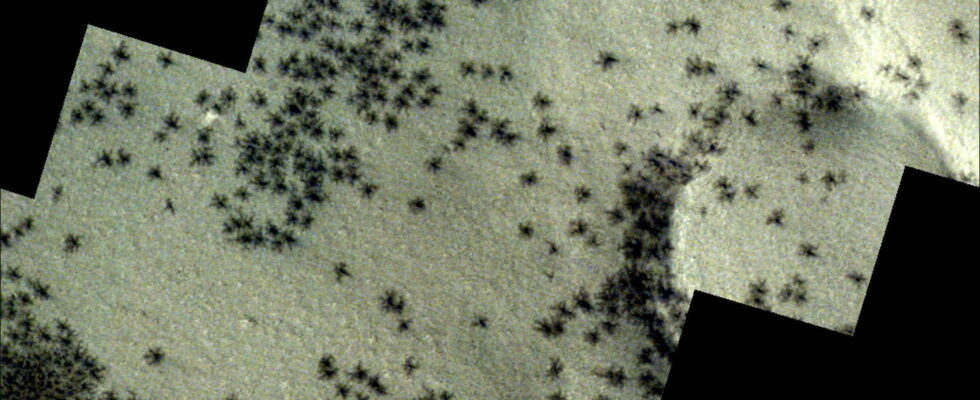NASA has studied “Mars spiders” and made an important discovery.
The exploration of the planet Mars continues to evolve and discoveries are frequent. After the crystals found by the Curiosity rover, NASA has looked into the “Mars spiders”, which are found in the southern hemisphere of the red planet. If scientists have been wondering about these “spiders” for several years, they have now managed to recreate them in the laboratory to understand their origin. The results of this study were published in The Planetary Science Journal.
To do this, it was necessary to reproduce the conditions on the planet Mars. This means extremely low temperatures, down to minus 185 degrees, as well as low pressures. The researchers then created a test chamber cooled with liquid nitrogen before injecting carbon dioxide into it. The team also used a substance that simulated Martian soil. Then, they feigned the beginning of the Martian spring with a heat source.

That’s how they were able to copy these “Mars spiders.” They’re actually geological structures that look like spiders, which are channels, divided into several branches, dug into the Martian surface. Some of them are more than a kilometer long. “Spiders are strange and beautiful geological phenomena in their own right,” said Lauren McKeown, lead author of the study.
Studying them in the lab has shed light on how they form. They appear when sunlight penetrates the transparent layers of dry ice that accumulate during the Martian winter. As the light absorbs, the ground heats up and the trapped gas builds up pressure under the ice, cracking the surface. This releases plumes of gas and dust. It is this process, called sublimation, a direct transition from solid to gas, that creates these channels that look like spider legs.
Some questions remain, particularly those around their location. Researchers would also like to understand why they no longer seem to evolve at present, whether in size or number. It is then possible that they are vestiges of a time when the climate was different on Mars. They could therefore be bearers of the geological past of the planet.
